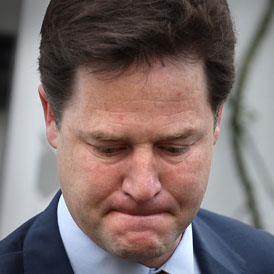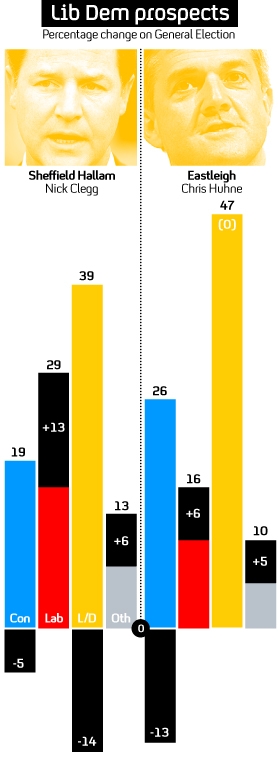Local elections: Hidden hope for the Lib Dems?
A bad night in the local elections for the Lib Dems, but political analyst Lewis Baston finds a glimmer of hope for Nick Clegg and his party in the electoral mathematics.

Across most of urban England, the local election results were disastrous for the Liberal Democrats.
They lost control of their flagship councils – Hull and Newcastle to Labour, Bristol and – surprisingly – Stockport to no overall control.
They saw their councillors scythed down in Sheffield, Leeds, Liverpool and Oldham as years of gradual progress was undone at a stroke.
However, a closer look at the figures produces an interesting glimmer of hope for the party. While they were trounced in areas where their hopes for gains from Labour in 2010 were disappointed, in a surprisingly large number of places where they elected an MP they were still ahead in the 2011 local elections.

Even in Sheffield, Nick Clegg’s majority in Hallam would have been dented but his local government running mates were still ahead of the competition.
In the southern suburban borough of Eastleigh, the highly efficient Lib Dem campaign machine steamrollered to another landslide victory – Chris Huhne would be re-elected with an increased majority on these numbers.
Local elections, it should be admitted, are not general elections. The turnout is around 30-40 per cent rather than 60-70 per cent, and sometimes people choose differently in different sorts of elections. For instance, people voted for Lib Dem councillors but a Conservative MP in Colne Valley on the same day in 2010.
But with this health warning in mind, the picture in a number of other Lib Dem seats is surprisingly positive. They would hold off Conservative challenges in northern seats such as Southport, Cheadle and Hazel Grove despite losing votes to Labour, and southern MPs such as Mike Hancock (Portsmouth South) and Don Foster (Bath) also saw some good local results in their areas.
Lib Dem council candidates in Birmingham Yardley were narrowly ahead in contrast to massive majorities in the past – not a good sign for MP John Hemming – as their popularity at council level has tended to outrun their parliamentary vote.
Lib Dem fortunes in areas where they have MPs were not uniformly good in England, and were poor in Wales and positively disastrous in Scotland.
Some recent gains from Labour such as Manchester Withington, Norwich South, Burnley and Redcar would revert decisively to Labour, and Labour also won well in Cambridge.
The Conservatives recovered ground in their number one target seat from the Lib Dems – Solihull – but there was no decisive shift in votes. As with their contests against Labour, the Lib Dems seemed to fall back worst in areas such as Chelmsford, where they did well in 2010 but did not win the seat.
The local elections of 2011 were, overall, the worst the Lib Dems have suffered since the early days of their party in the late 1980s. The party ceased to exist in a lot of its weaker areas.
Clegg’s dream before the 2010 election of a realignment in the northern cities now looks completely impossible, and the party also shed a lot of the leftist, Scottish and academic support it had gathered under Charles Kennedy.
But the electoral base built in the Ashdown years – the south west, the suburbs and resorts – is still standing.